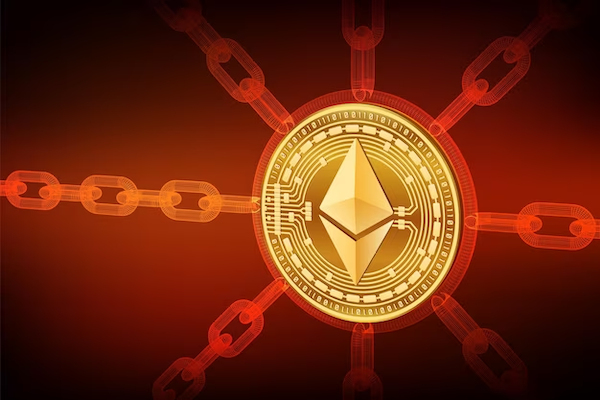The mempool ethereum is an essential component of the Ethereum blockchain that plays a crucial role in processing transactions. Ethereum is the second largest cryptocurrency on the market, and you can buy it in many different foreign currencies, including ethereum price cad. To understand how transactions move through the Ethereum network, one must decode the basics of the Ethereum Mempool.
What is the Ethereum Mempool?
The Ethereum Mempool, short for memory pool, is a data structure that stores pending transactions before they are added to a block and confirmed on the blockchain. When a user initiates a transaction on the Ethereum network, it enters the Mempool and awaits validation from miners.

Why is the Mempool Important?
The Mempool serves as a temporary storage space for transactions, ensuring that they are processed in a fair and efficient manner. Miners select transactions from the Mempool to include in a block based on various factors like transaction fees and gas limits. Understanding the dynamics of the Mempool can help users navigate the blockchain more effectively.
How Does the Mempool Work?
When a transaction is submitted to the Ethereum network, it is broadcasted to all participating nodes. These nodes verify the transaction and, if valid, propagate it to other nodes. The transaction then enters the Mempool, where it awaits confirmation. Miners select transactions from the Mempool, group them into blocks, and add them to the blockchain through a process known as mining.
Mempool Dynamics: How Transactions Move Through the Ethereum Network
To navigate the Ethereum Mempool efficiently, it is crucial to understand how transactions move through the Ethereum network. The dynamics of the Mempool determine the speed and cost of transaction processing.
Transaction Prioritization
Miners prioritize transactions based on various factors, including transaction fees and gas limits. Transactions with higher fees are more likely to be included in the next block since miners are incentivized by these fees. Gas limits also play a role in transaction prioritization, as transactions with lower gas limits are usually processed faster.
Mempool Size
The size of the Mempool fluctuates depending on the network’s activity. During periods of high demand, the Mempool can become congested, resulting in longer confirmation times and higher transaction fees. Conversely, during periods of low demand, the Mempool size decreases, leading to faster and cheaper transactions.
Transaction Backlog
If the Mempool becomes too crowded with pending transactions, a backlog can occur. This backlog usually happens during times of high network congestion or when there is a sudden surge in transaction activity. A transaction backlog can cause delays in confirmation times and increase transaction fees.
Transaction Lifecycle: From Submission to Confirmation in the Ethereum Mempool
Understanding the transaction lifecycle within the Ethereum Mempool is essential for users to anticipate confirmation times and ensure the efficiency of their transactions.
Transaction Submission
When a user initiates a transaction on the Ethereum network, it is submitted to the network and enters the Mempool. The transaction is then propagated to other nodes for verification and inclusion in the Mempool.
Transaction Validation
Nodes in the Ethereum network verify the submitted transaction for its validity. This verification process ensures that the transaction adheres to the network’s rules and security measures. If the transaction is deemed valid, it remains in the Mempool awaiting confirmation.
Transaction Selection by Miners
Miners play a vital role in selecting transactions from the Mempool to include in a new block. They prioritize transactions based on factors such as transaction fees, gas limits, and network congestion. Transactions with higher fees and lower gas limits are more likely to be included in the next block.
Confirmation and Block Inclusion
Once a miner includes a transaction in a block, it is considered confirmed. The block is then added to the Ethereum blockchain, making the transaction immutable and visible to all network participants. It is important to note that confirmation times can vary depending on network conditions and the transaction’s prioritization within the Mempool.
Best Practices: Navigational Tips for Efficiently Using the Ethereum Mempool
Navigating the Ethereum Mempool can be daunting, especially during periods of high network activity. However, with a few best practices, users can optimize their transaction experience and ensure smooth interactions with the Ethereum blockchain.
Transaction Fee Optimization
To expedite transaction confirmation, users can adjust the transaction fee. Setting a higher fee increases the likelihood of miners prioritizing the transaction. Online platforms and wallets often provide fee estimation tools to help users determine an appropriate fee based on current network conditions.
Gas Limit Management
Gas limits determine the computational resources allocated to a transaction. Setting a higher gas limit can increase the chances of successful transaction processing. However, it is important to strike a balance to avoid unnecessary costs, as higher gas limits require more fees.
Network Monitoring
Staying informed about network conditions and congestion can help users navigate the Ethereum Mempool more efficiently. Various online tools and platforms provide real-time data on network activity, gas fees, and Mempool size. Monitoring these metrics can help users choose optimal times for transaction submission.
Patience and Flexibility
During peak network activity, it is essential to exercise patience and flexibility when using the Ethereum Mempool. Confirmation times may be longer, and transaction fees may be higher. By understanding the dynamics of the Mempool and adjusting expectations, users can navigate the blockchain more effectively.
Navigating the Ethereum Mempool is an essential skill for users of the Ethereum blockchain. By understanding the basics of the Mempool, the dynamics of transactions within the network, and implementing best practices, users can optimize their transaction experience and ensure efficient interactions with the Ethereum blockchain. With careful attention to transaction prioritization, network conditions, and fee optimization, users can navigate the Ethereum Mempool with confidence and ease.
Read More:

